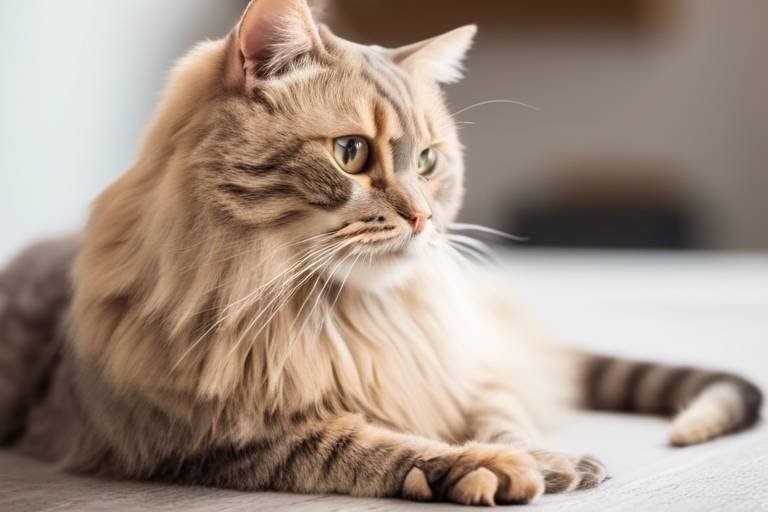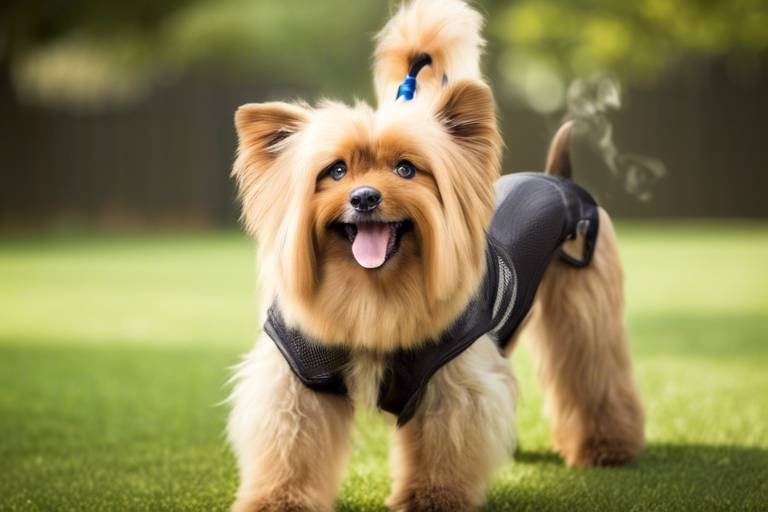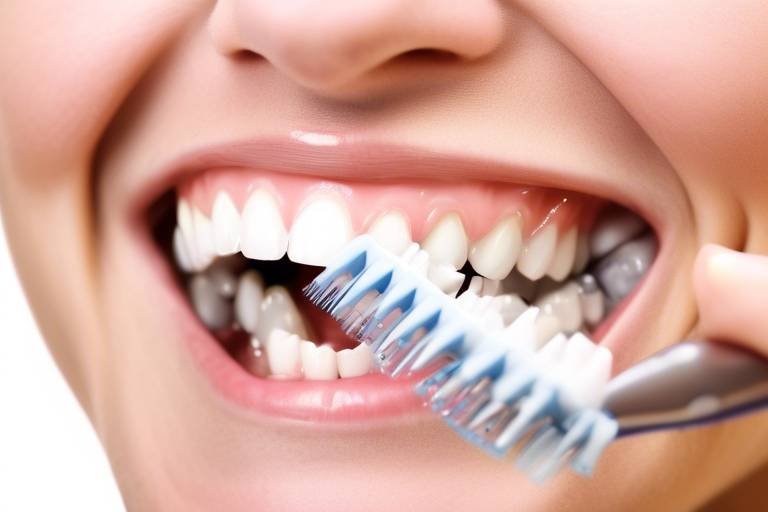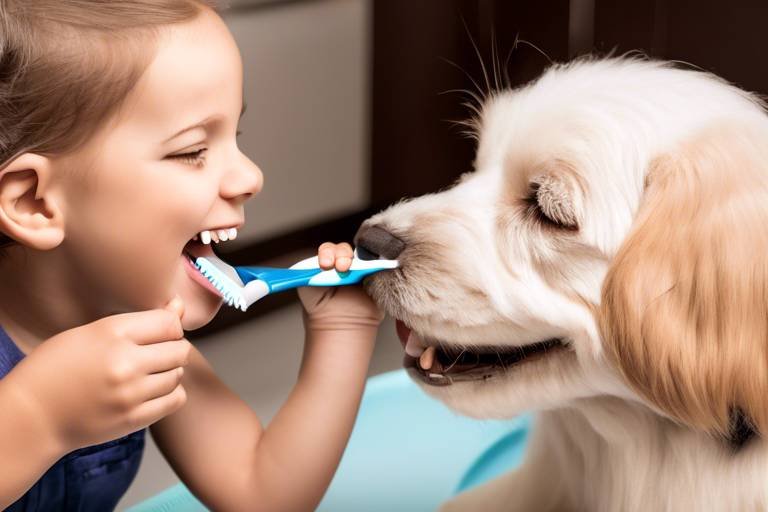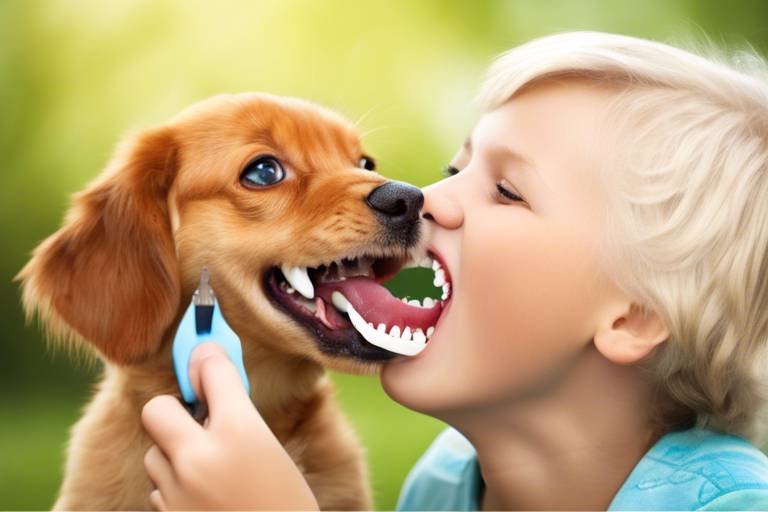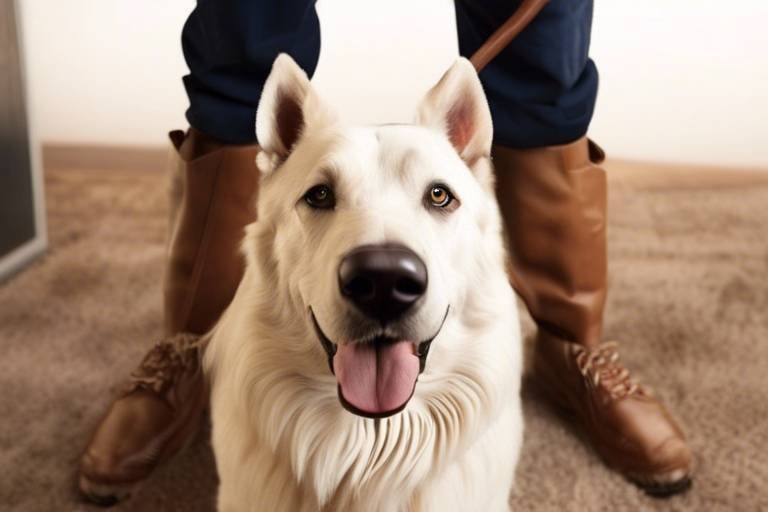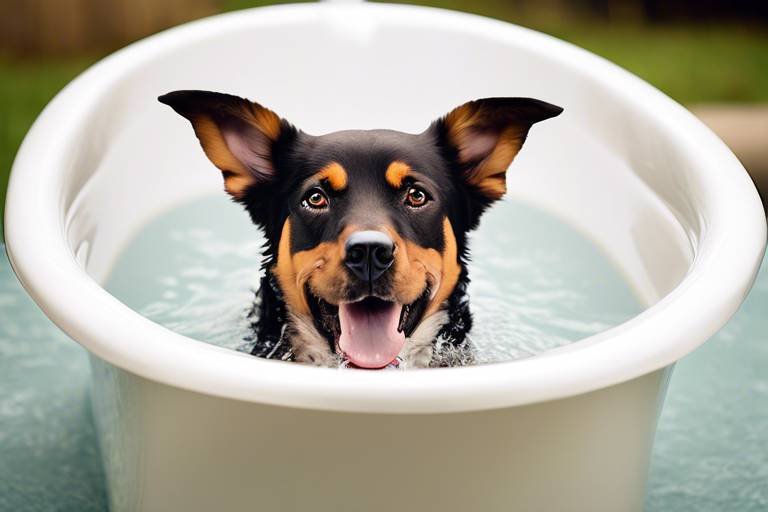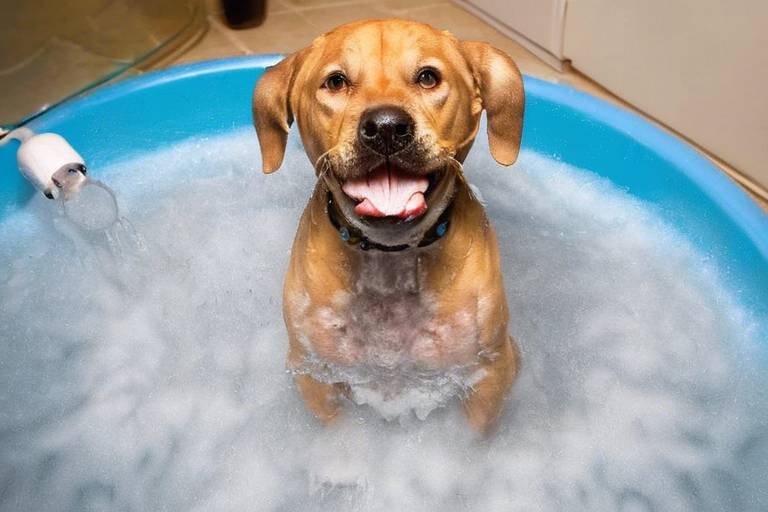Tips for Grooming Senior Cats at Home
Grooming your senior cat at home is not just a matter of aesthetics; it’s a vital part of keeping your furry friend happy and healthy. As cats age, they experience changes that can affect their grooming needs. You might find that your once sprightly feline now has a few more mats in their fur or seems to struggle with mobility. The good news? You can turn grooming into a bonding experience rather than a chore. With the right techniques and tools, you can ensure that your senior cat feels comfortable and loved during grooming sessions.
So, what exactly should you keep in mind when grooming a senior cat? For starters, consider their physical condition. Older cats may have arthritis or other health issues that make certain positions uncomfortable. This is why it’s essential to create a relaxing environment and use gentle techniques. Think of grooming as a mini spa day for your cat! They deserve to feel pampered, don’t you think?
In this article, we will explore various tips and tricks that can help you navigate the grooming process smoothly. From understanding the unique needs of senior cats to selecting the right tools and creating a comfortable grooming environment, you’ll learn how to make this experience enjoyable for both you and your kitty. Plus, we’ll cover when it’s time to call in the professionals. After all, there’s no shame in asking for help when it comes to your beloved pet’s grooming! Let’s dive into the world of senior cat grooming, shall we?
As cats age, their grooming needs can change significantly. It’s crucial to recognize these changes and adapt your grooming routine accordingly. Senior cats may not groom themselves as effectively as they once did, leading to issues like matting or skin problems. Additionally, they might become more sensitive to touch, which can make grooming a bit tricky. Understanding these needs is the first step toward ensuring your cat remains comfortable and healthy.
Here are some key aspects to consider:
- Mobility Issues: Arthritis or joint pain can make it challenging for your cat to groom itself.
- Skin Health: Older cats may have drier skin, making regular grooming essential to avoid irritation.
- Weight Changes: Senior cats often experience weight fluctuations, which can affect their grooming habits.
By keeping these factors in mind, you can tailor your grooming sessions to meet the specific needs of your senior cat, ensuring they feel comfortable and cared for.
Using the right tools is crucial for effective grooming. Just like a painter needs the right brushes, you need the appropriate grooming tools to make the process easier and more enjoyable for your senior cat. Let’s explore some essential grooming tools that every cat owner should have in their arsenal.
Different types of brushes and combs serve various purposes. For instance, a slicker brush can help remove loose fur and prevent matting, while a wide-toothed comb is ideal for detangling. When choosing brushes for your senior cat, consider their coat type:
| Coat Type | Recommended Tool |
|---|---|
| Short Hair | Slicker Brush |
| Medium Hair | Wide-Toothed Comb |
| Long Hair | Pin Brush |
By selecting the right tools, you can effectively manage your senior cat's grooming needs while minimizing discomfort.
Bathing can be stressful for cats, especially seniors. However, if your cat needs a bath, there are gentle techniques you can use to make the experience less traumatic. Always ensure the water temperature is comfortable, and use a mild cat shampoo. Remember, less is more! A quick rinse and dry can often suffice.
A calm and comfortable environment is key to successful grooming. Think of it as creating a cozy nook where your cat can relax. Choose a quiet room away from loud noises and distractions. You might even want to play some soft music to help set the mood.
Positive reinforcement can make grooming a more pleasant experience. Reward your cat with treats or gentle praise during and after grooming sessions. This will help build trust and reduce anxiety, turning grooming into a fun activity instead of a dreaded chore.
Sometimes, senior cats may require professional grooming assistance. If you notice excessive matting, skin irritations, or if your cat seems particularly distressed during grooming, it might be time to seek help from a groomer or veterinarian. Remember, it’s always better to be safe than sorry!
Q: How often should I groom my senior cat?
A: It depends on your cat's coat type and health. Generally, once a week is a good starting point, but some cats may require more frequent grooming.
Q: Can I use human shampoo on my cat?
A: No, human shampoo can be too harsh for cats. Always use a shampoo specifically formulated for cats.
Q: What if my cat doesn't like being groomed?
A: Take it slow! Start with short sessions and use treats as rewards. If your cat continues to resist, consider consulting a professional groomer.
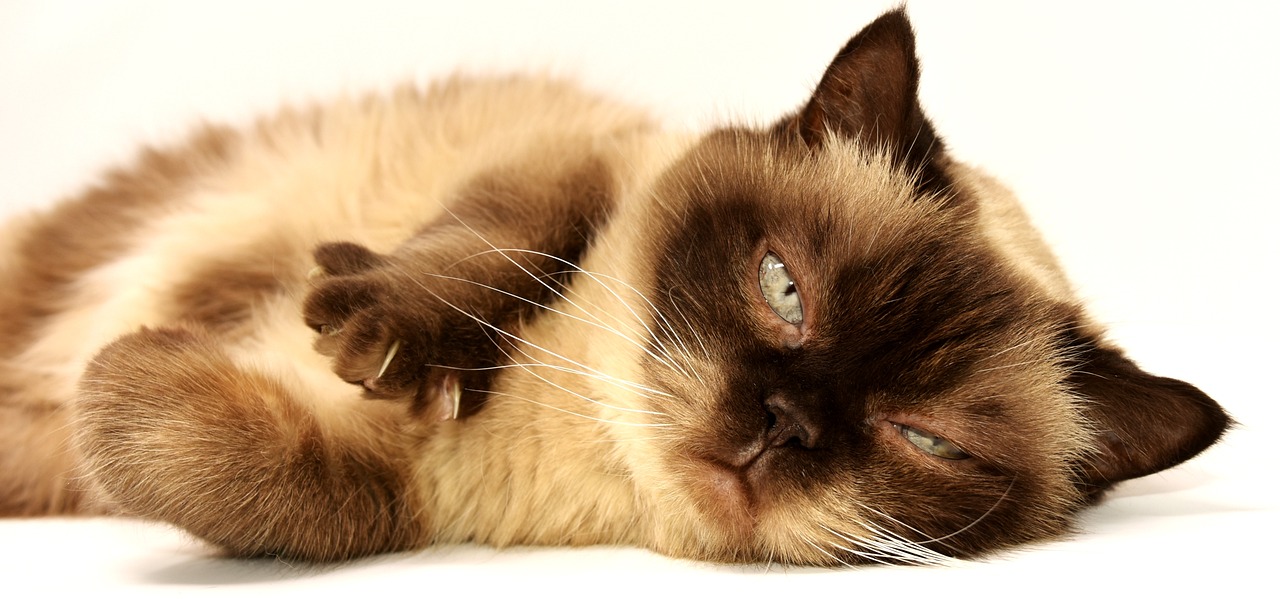
Understanding the Needs of Senior Cats
As our feline friends age, they go through a variety of changes that can significantly affect their grooming needs. Senior cats, typically defined as those over the age of seven, often experience a decline in mobility, changes in their coat quality, and even alterations in their skin health. It’s essential to understand these unique needs to ensure that your older cat remains comfortable and healthy.
One of the most noticeable changes in senior cats is their coat. As they age, their fur may become thinner, drier, or even develop mats more easily. This is often due to a decrease in the natural oils produced by their skin. Additionally, senior cats may not groom themselves as effectively as they once did, leading to a buildup of loose fur and dirt. Regular grooming becomes more critical during this time, as it not only helps maintain their coat but also provides an opportunity for you to check for any skin issues or lumps that may require veterinary attention.
Moreover, senior cats may have specific health issues that can complicate grooming. For instance, arthritis can make it painful for them to bend and groom certain areas of their body. This is where your role as a pet owner becomes crucial. You’ll want to adapt your grooming routine to accommodate their physical limitations. Consider using shorter grooming sessions and focusing on areas that are harder for them to reach, like their back and tail. Always be gentle and observe how your cat reacts to ensure they are not in pain.
Another important aspect to consider is the emotional state of your senior cat. Aging can sometimes lead to anxiety or stress, particularly if they are dealing with changes in their environment or health. Creating a calm and reassuring grooming routine can help alleviate their fears. This includes using soothing voices, gentle touches, and perhaps even playing soft music in the background while you groom.
Here are some key points to keep in mind regarding the grooming needs of senior cats:
- Mobility Issues: Be mindful of any difficulty your cat may have moving around. Choose grooming positions that are comfortable for them.
- Skin and Coat Changes: Regularly check for dry skin, mats, or any abnormalities in their coat.
- Health Considerations: Look out for signs of pain or discomfort during grooming sessions.
- Emotional Well-being: Ensure the grooming environment is calm and stress-free.
By understanding these unique needs, you can tailor your grooming approach to suit your senior cat better. Not only will this help maintain their physical health, but it will also strengthen the bond you share. Remember, grooming is not just a chore; it’s an opportunity for love and connection with your beloved pet.
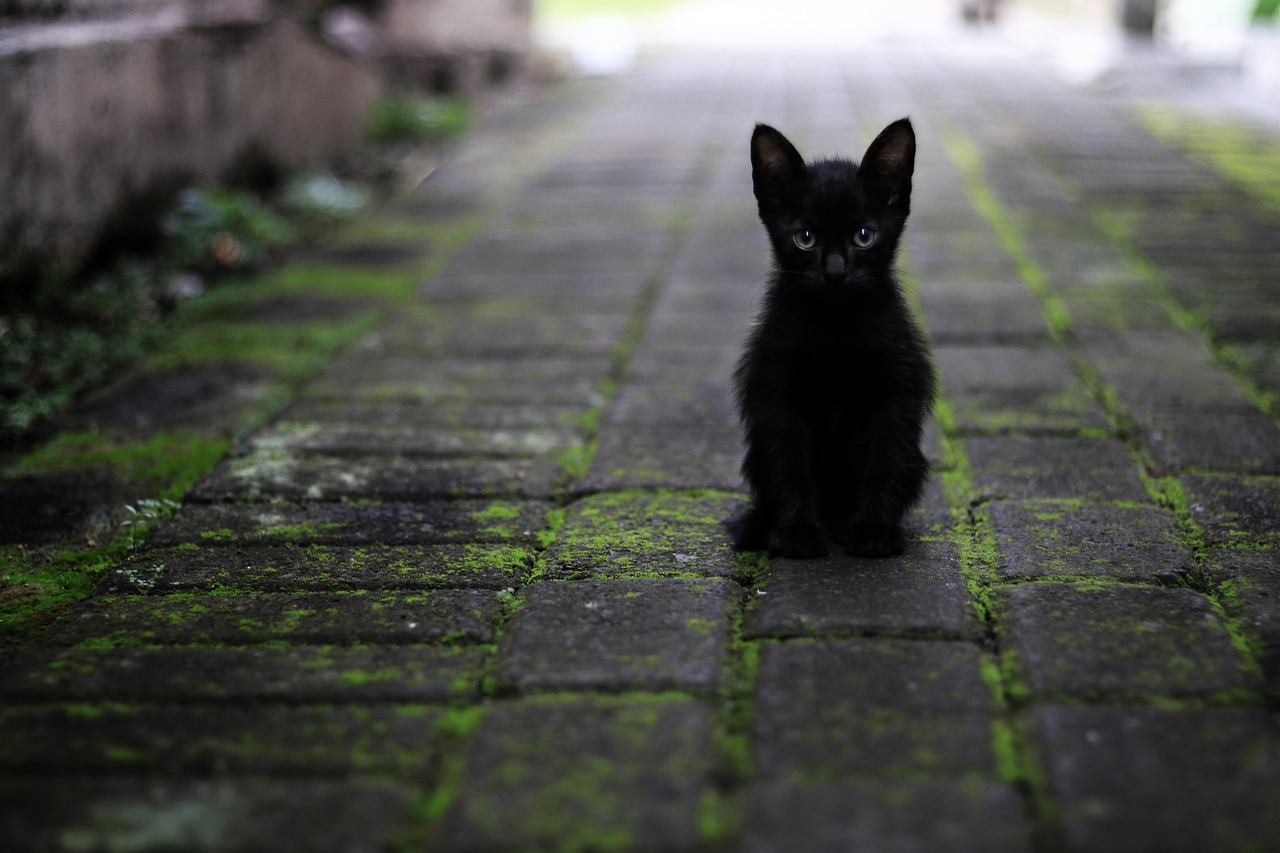
Essential Grooming Tools
Grooming your senior cat isn't just about keeping them looking good; it's a vital part of their overall health and well-being. As your furry friend ages, their grooming requirements change, making it essential to use the right tools for the job. Using appropriate grooming tools not only makes the process easier for you but also ensures that your cat remains comfortable and stress-free. So, what should you have in your grooming toolkit? Let's dive into the must-have items that will transform your grooming sessions into a bonding experience.
First on the list are brushes and combs. Different types of brushes serve various purposes, and understanding these differences is crucial. For instance, a slicker brush is fantastic for removing mats and tangles, especially in long-haired breeds, while a bristle brush is perfect for short-haired cats. When grooming your senior cat, be gentle; their skin can be more sensitive, and you want to avoid causing any discomfort. Using a soft brush can also help stimulate their skin and promote healthy blood circulation, which is particularly beneficial for older cats.
When selecting brushes and combs, consider your cat's coat type. Long-haired cats might need a wide-toothed comb to detangle knots, while short-haired cats can benefit from a rubber grooming mitt that not only removes loose fur but also massages their skin. Here’s a quick breakdown:
| Coat Type | Recommended Tool | Purpose |
|---|---|---|
| Long-haired | Slicker Brush | Removes mats and tangles |
| Short-haired | Rubber Grooming Mitt | Removes loose fur and massages |
| Both | Wide-toothed Comb | Detangles knots |
Next up are de-shedding tools. These tools are lifesavers when it comes to managing loose fur and preventing matting, which can be a significant issue for older cats. De-shedding tools like the Furminator can help reduce shedding by removing the undercoat without damaging the topcoat. When using these tools, it’s essential to be gentle and to follow the direction of hair growth to avoid irritating your cat's skin. Regular de-shedding can also reduce the amount of fur around your home, making it a win-win situation for both you and your furry companion!
When incorporating de-shedding into your grooming routine, aim for a schedule that suits your cat's shedding cycle. During shedding season, you might need to use these tools more frequently. Remember, consistency is key! Not only will this keep your home cleaner, but it will also keep your senior cat comfortable.
Regular nail trimming is another crucial aspect of grooming that shouldn’t be overlooked. Senior cats can have brittle nails that are more prone to breaking, so keeping them trimmed is essential for their comfort and safety. Investing in a good pair of clippers or scissors designed for pets is vital. Look for clippers that are easy to handle and have a safety guard to prevent cutting too deep. If you're unsure about trimming your cat's nails, consider watching tutorial videos or asking your veterinarian for a demonstration. This way, you can ensure that your cat is groomed safely and effectively.
Lastly, while bathing isn't something most cats enjoy, it can sometimes be necessary for senior cats, especially if they have mobility issues that prevent them from grooming themselves properly. A gentle bath using cat-friendly shampoo can help keep their coat clean and healthy. Always make sure to dry them thoroughly afterward, as older cats can be more susceptible to the cold.
In summary, having the right grooming tools is essential for maintaining your senior cat's health and comfort. From brushes and combs to de-shedding tools and clippers, each item plays a significant role in ensuring that your furry friend remains happy and healthy. Remember, grooming is not just a chore; it’s an opportunity to bond with your beloved pet!
- How often should I groom my senior cat? It depends on their coat type, but generally, long-haired cats should be groomed at least 2-3 times a week, while short-haired cats may only need grooming once a week.
- Can I bathe my senior cat? Yes, bathing can be beneficial, especially if they have trouble grooming themselves. Use a gentle cat shampoo and ensure they are thoroughly dried afterward.
- What if my cat resists grooming? Try using positive reinforcement, such as treats or praise, to make the experience more enjoyable for them. Start slowly and gradually increase the grooming time.
Brushes and Combs
When it comes to grooming your senior cat, choosing the right brushes and combs is essential. As our feline friends age, their coats can become matted and tangled more easily, requiring a bit more attention. Different types of brushes and combs serve various purposes, and understanding these can make a world of difference in your grooming routine. For instance, a soft bristle brush is excellent for daily brushing, as it gently removes loose fur without causing discomfort. On the other hand, a slicker brush is perfect for tackling those stubborn mats that can form in older cats, particularly in areas where they might not groom themselves as effectively.
Additionally, combs are invaluable tools for grooming senior cats. A wide-toothed comb can help detangle knots without pulling on the skin, which is particularly important for older cats who may have more sensitive skin. If your cat has a longer coat, consider using a double-sided comb that features both wide and narrow teeth, allowing you to address various coat issues with ease. Remember, the goal is to make grooming a positive experience, so take your time and be gentle. Use a calm voice and soothing strokes to help your cat feel relaxed during the process.
Here's a quick overview of some common grooming tools and their uses:
| Tool Type | Purpose |
|---|---|
| Soft Bristle Brush | Daily brushing to remove loose fur and dirt |
| Slicker Brush | Removing mats and tangles |
| Wide-Toothed Comb | Detangling knots without pulling |
| Double-Sided Comb | Versatile for different coat types |
Ultimately, the right brush or comb can make grooming less stressful for both you and your senior cat. Regular grooming not only helps maintain a healthy coat but also strengthens the bond between you and your feline companion. So, invest some time in finding the tools that work best for your furry friend, and watch as grooming transforms from a chore into a cherished bonding experience.
- How often should I groom my senior cat? It’s recommended to groom your senior cat at least once a week, but you may need to do it more frequently if they have long hair or are prone to matting.
- Can I use human brushes on my cat? While some human brushes may work, it’s best to use brushes specifically designed for cats, as they are tailored to their unique fur and skin types.
- What if my cat doesn’t like being groomed? Start slowly and use positive reinforcement like treats and praise. If your cat is particularly anxious, consider consulting a professional groomer for tips.
De-shedding Tools
When it comes to grooming your senior cat, are a game changer. As our feline friends age, their coats can become less manageable, leading to an increase in loose fur and potential matting. This is where de-shedding tools come into play, helping you maintain a healthy and beautiful coat while also reducing the amount of hair you find around your home. But how do you choose the right tool, and how can you use it effectively? Let's dive in!
First off, it’s essential to understand the different types of de-shedding tools available. Each tool is designed with a specific purpose in mind, and knowing which one to use can make a significant difference in your grooming routine. Here are some popular options:
- De-shedding Rakes: These tools have a series of teeth that help to pull out loose fur without damaging the undercoat. They are particularly effective for cats with thicker coats.
- Rubber Grooming Gloves: These gloves not only help to remove loose hair but also provide a gentle massage, making grooming a pleasant experience for your cat.
- Furminator: This is a well-known brand that offers specialized de-shedding tools with a unique design that effectively removes loose hair while minimizing cutting the skin.
Using these tools correctly is just as important as choosing the right one. Start by ensuring your cat is calm and comfortable—perhaps after a nice meal or a play session. Gently brush your cat in the direction of hair growth, taking care to be gentle around sensitive areas like the belly and tail. If you notice any mats, address them carefully with your fingers or a comb before using the de-shedding tool to avoid causing discomfort.
Regular grooming sessions using de-shedding tools can lead to several benefits for your senior cat, including:
- Reduced Shedding: By regularly removing loose hair, you can significantly cut down on the amount of fur around your home.
- Healthier Skin: De-shedding helps to distribute natural oils throughout your cat’s coat, promoting healthier skin.
- Bonding Time: Grooming can serve as a bonding experience, allowing you to spend quality time with your furry friend.
In conclusion, investing in the right de-shedding tools and employing proper techniques can transform the grooming experience for both you and your senior cat. Not only will it keep their coat looking fabulous, but it will also contribute to their overall health and happiness. So, grab those tools, and let the grooming sessions begin!
Q: How often should I de-shed my senior cat?
A: It depends on your cat’s coat type. Generally, once a week is sufficient for most senior cats, but long-haired breeds may require more frequent sessions.
Q: Can I use human grooming tools on my cat?
A: It’s best to use tools designed specifically for cats. Human grooming tools can be too harsh and may irritate your cat’s skin.
Q: What should I do if my cat resists grooming?
A: Start slow and make the experience positive. Use treats and praise to encourage your cat, and consider short sessions to avoid overwhelming them.
Clippers and Scissors
When it comes to grooming your senior cat, are essential tools that can significantly enhance the grooming experience. These tools are not just for aesthetics; they play a crucial role in maintaining your cat's health and well-being. As cats age, their nails can become brittle, and their fur may mat more easily, making regular grooming even more important. But how do you choose the right tools for your furry friend?
First off, selecting the right clippers is vital. Look for clippers that are specifically designed for cats, as they tend to be quieter and more ergonomic, making them less intimidating for your feline companion. Electric clippers can speed up the process, but if your cat is particularly anxious, manual clippers might be the way to go. Always ensure that the blades are sharp; dull blades can tug at the fur, causing discomfort and stress.
Now, let’s talk about scissors. A good pair of grooming scissors can help you tackle those pesky mats and tangles that often accumulate in a senior cat's fur. Opt for rounded-tip scissors to minimize the risk of accidental cuts. When using scissors, be sure to work slowly and carefully, especially around sensitive areas like the paws and face. A gentle touch is key!
Here’s a quick comparison of the types of clippers and scissors you might consider:
| Tool Type | Best For | Notes |
|---|---|---|
| Electric Clippers | Quick grooming sessions | May scare anxious cats; use with caution |
| Manual Clippers | Precise control | Less intimidating for seniors |
| Grooming Scissors | Removing mats and tangles | Rounded tips for safety |
Now, when it comes to using these tools, it’s all about comfort and safety. Before you start, ensure your cat is calm. You might want to play with them or give them a treat to create a positive association with grooming. When using clippers or scissors, always keep your cat secure but comfortable. You can gently wrap them in a towel, leaving only the area you're working on exposed. This method can help them feel more secure and prevent sudden movements.
Remember, grooming should be a bonding experience for both you and your senior cat. Take breaks if your cat seems stressed or agitated. Patience is key! If you find that your cat is particularly resistant to grooming, it may be worth consulting with a professional groomer or veterinarian for additional tips or assistance.
- How often should I groom my senior cat? Ideally, you should groom your senior cat at least once a week, but this may vary based on their coat type and health.
- What if my cat doesn’t like being groomed? Use positive reinforcement techniques, such as treats and praise, to make the experience more enjoyable.
- Is it safe to use human clippers on my cat? No, it’s best to use clippers specifically designed for pets to avoid injury.
- How can I tell if my cat’s nails need trimming? If you hear clicking sounds when they walk or if their nails are visibly long, it’s time for a trim.
Bathing Techniques for Senior Cats
Bathing your senior cat can feel like a daunting task, but with the right techniques, it can be a smooth experience for both you and your furry friend. First and foremost, it's important to understand that many senior cats may have mobility issues or sensitive skin, so gentle handling is key. Always start by preparing your bathing area. Choose a warm, quiet space where your cat feels safe. You might want to use a basin or a bathtub, but ensure that the surface is non-slip to prevent any accidents. Additionally, having everything you need within arm's reach will minimize the time your cat spends in the water, which is crucial for their comfort.
Before you even get to the bathing part, it's a good idea to brush your cat thoroughly. This helps remove loose fur and detangles any mats that could become problematic once wet. Remember, senior cats often have thinner skin, making them more susceptible to discomfort. So, when brushing, use a gentle hand and a soft brush. Once your cat is prepped, you can start the bathing process.
When it comes to the actual bathing, temperature is everything. Make sure the water is lukewarm—not too hot, and definitely not cold. Cats are sensitive to temperature changes, and a comfortable bath will help keep them calm. You can use a cup or a gentle spray nozzle to wet your cat's fur, but be cautious around their face and ears. To avoid frightening your cat, speak softly and reassuringly throughout the process. You might even consider playing some soft music to create a soothing atmosphere.
As you apply cat-friendly shampoo, be sure to lather gently, focusing on the areas that really need it, like the back and sides. Avoid the face, as many cats dislike getting water in their eyes or ears. If your cat is particularly anxious, you can use a damp cloth to clean their face instead. After rinsing thoroughly, ensure that no shampoo residue remains, as this can irritate their skin. Once your cat is clean, gently towel-dry them. Some senior cats might appreciate a low-heat blow dryer, but be sure to keep it at a distance and observe their reaction.
Finally, remember that positive reinforcement can work wonders. After the bath, reward your cat with their favorite treat or some extra cuddles. This will help them associate bath time with a positive experience, making future grooming sessions easier. If your senior cat seems particularly stressed or resistant, consider consulting a veterinarian for advice on alternative bathing methods or products that might be more suitable for their needs.
- How often should I bathe my senior cat? Generally, senior cats do not require frequent baths unless they get into something messy. Once every few months is usually sufficient, but always assess your cat's needs.
- What if my cat hates water? If your cat is particularly averse to water, consider using waterless shampoos or wipes designed for cats to keep them clean without the stress of a bath.
- Can I use human shampoo on my cat? No, human shampoos can be too harsh for a cat's sensitive skin. Always opt for a shampoo specifically formulated for cats.
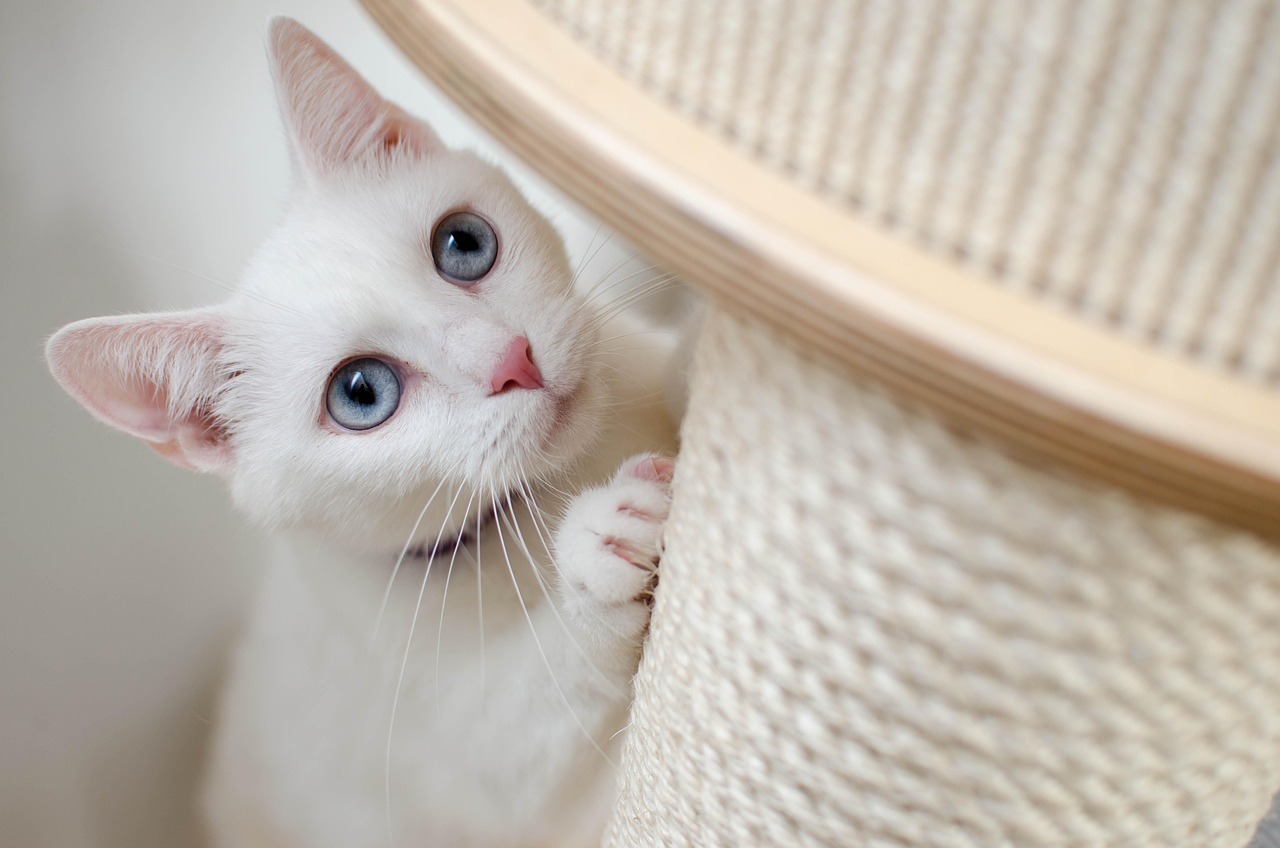
Creating a Comfortable Grooming Environment
When it comes to grooming your senior cat, creating a comfortable environment is absolutely essential. Imagine how you feel when you’re in a cozy, familiar space—your cat is no different! A calm atmosphere can significantly reduce stress and make grooming sessions much more enjoyable for both you and your furry friend. So, how do we achieve this? Let’s dive into some practical tips!
First, consider the location of your grooming sessions. Cats are creatures of habit, and they thrive in familiar surroundings. Choose a quiet room in your home where your cat feels safe. This could be a favorite nook or a sunny spot by the window. Avoid high-traffic areas where loud noises and sudden movements may startle them. If your cat has a special blanket or bed they love, consider using it during grooming. This simple act can provide a sense of security and comfort.
Next, think about the temperature of the space. Senior cats can be sensitive to temperature changes, so ensure the room is warm enough to keep them cozy, especially if they have thin or sparse fur. A gentle heating pad can be a great addition, but be sure to monitor it closely to prevent overheating. You want your cat to feel relaxed, not too hot or too cold!
Lighting also plays a crucial role in creating a soothing environment. Natural light is ideal, but if that’s not possible, opt for soft, warm lighting. Bright, harsh lights can be intimidating and may make your cat feel uneasy. Consider using a dimmer switch or lamps that create a gentle glow. This will help set a calming mood that encourages relaxation.
To further enhance the experience, you might want to play some soft music or nature sounds in the background. Many cats respond positively to soothing sounds, which can help mask any sudden noises that might disrupt their calm. Just like humans, cats have unique preferences, so experiment to find what resonates with your feline friend.
Lastly, don’t underestimate the power of positive reinforcement. Treats, gentle praise, and petting can go a long way in making grooming a pleasant experience. After each grooming session, reward your cat with a favorite treat or a little playtime. This not only builds trust but also creates a positive association with grooming, making it easier for future sessions.
In summary, a comfortable grooming environment is key to ensuring your senior cat feels safe and relaxed. By paying attention to location, temperature, lighting, sound, and positive reinforcement, you can transform grooming from a stressful chore into a bonding experience. Your cat will appreciate the effort, and you’ll both look forward to those special moments together!
- How often should I groom my senior cat? It depends on their coat type, but generally, once a week is a good starting point.
- What if my cat doesn't like being groomed? Take it slow, use treats, and create a positive environment to help them adjust.
- Are there specific products for senior cats? Yes, look for gentle grooming tools and shampoos designed for sensitive skin.
- When should I consider professional grooming? If your cat has severe matting, skin issues, or if grooming becomes too stressful for them.
Choosing the Right Location
When it comes to grooming your senior cat, the location you choose can significantly impact their comfort and overall experience. Imagine trying to relax at a noisy café while someone is trying to give you a haircut—it's just not ideal! Your senior cat deserves a space that feels safe and calm, allowing them to enjoy the grooming process rather than dread it.
First and foremost, look for a quiet area in your home where your cat feels at ease. This could be a cozy corner in the living room or a sun-drenched spot by the window. Cats often have their favorite hangout spots, and using these areas can help them feel more secure during grooming sessions. Ensure the space is free from distractions like loud noises, sudden movements, or other pets that may cause anxiety.
Next, consider the temperature of the room. Senior cats are more sensitive to temperature changes, so it's essential to groom them in a comfortable environment. If it's too hot or too cold, your cat might become agitated. Aim for a room that is well-ventilated but not drafty, and avoid direct exposure to heating vents or air conditioning units.
Additionally, think about the surface you’ll be using for grooming. A soft, stable surface, such as a grooming table or a plush blanket on the floor, can provide a comforting place for your cat to sit or lie down. This not only helps them feel secure but also allows you to work more effectively without worrying about your cat slipping or sliding around.
Finally, it’s helpful to have all your grooming tools within arm’s reach. This minimizes the number of times you need to leave your cat's side, which can disrupt their calm and make them uneasy. Keep your brushes, combs, and any other tools organized in a nearby basket or tray. This way, you can focus on providing a gentle and reassuring grooming experience without unnecessary interruptions.
In summary, choosing the right location for grooming your senior cat is all about creating a safe, comfortable, and distraction-free environment. By considering factors like noise, temperature, surface, and accessibility, you can turn grooming into a positive bonding experience for both you and your beloved feline friend.
- How often should I groom my senior cat? It depends on the breed and coat type, but generally, once a week is a good starting point.
- What if my cat doesn't like being groomed? Take it slow, use positive reinforcement, and ensure the environment is calm.
- Can I use human grooming tools on my cat? It's best to use tools specifically designed for cats to avoid injury or discomfort.
- When should I consider professional grooming? If your cat has severe matting or health issues, it may be time to consult a professional.
Using Positive Reinforcement
Grooming your senior cat can sometimes feel like trying to convince a toddler to take a bath—it's not always easy! That's where positive reinforcement comes into play. This technique is all about creating a pleasant experience for your feline friend, making them associate grooming with something enjoyable rather than stressful. Imagine if every time you did something you didn't want to do, you were rewarded with a treat or a cuddle! Wouldn't that make the task a lot more bearable?
To start, it's essential to understand what motivates your cat. For some, it might be their favorite treat, while others might prefer a bit of extra attention or playtime. The key is to identify these motivators and use them strategically during grooming sessions. For example, you could begin by offering a small treat before you even take out the brush. This creates a positive association right from the get-go.
During the grooming process, be sure to reward your cat at various intervals. If they sit still while you brush them, give them a treat and a gentle scratch behind the ears. This not only reinforces the behavior you want to see but also helps build trust between you and your cat. Remember, patience is vital. If your cat becomes anxious or agitated, take a break and return to grooming later. Forcing the issue can lead to negative associations, which is the opposite of what you want.
Here are a few additional tips to effectively use positive reinforcement during grooming:
- Start Slow: Gradually introduce grooming tools and techniques to your cat. Let them sniff and explore the brush before using it.
- Short Sessions: Keep grooming sessions brief at first to avoid overwhelming your cat. Gradually increase the time as they become more comfortable.
- Celebrate Small Wins: Acknowledge and reward even the smallest achievements. If your cat allows you to brush them for a minute, that’s a win!
Finally, don’t forget to mix things up! Sometimes, a little variety can keep things exciting. Try different treats or toys, or even change the grooming tool you’re using. This keeps your cat engaged and less likely to associate grooming with boredom or stress. By consistently using positive reinforcement, you can transform grooming from a dreaded chore into a bonding experience, ensuring that both you and your senior cat look forward to these special moments together.
Q: How often should I groom my senior cat?
A: Generally, senior cats should be groomed at least once a week, but this can vary based on their coat type and grooming needs.
Q: What if my cat doesn’t like being groomed?
A: Start with short sessions and use positive reinforcement. Gradually increase the duration as your cat becomes more comfortable.
Q: Can I use human grooming tools on my cat?
A: It's best to use tools specifically designed for cats, as they cater to their unique fur and skin needs.
Q: What should I do if I find mats in my cat's fur?
A: If mats are small, you can gently work them out with a comb. For larger mats, consider seeking professional help to avoid hurting your cat.
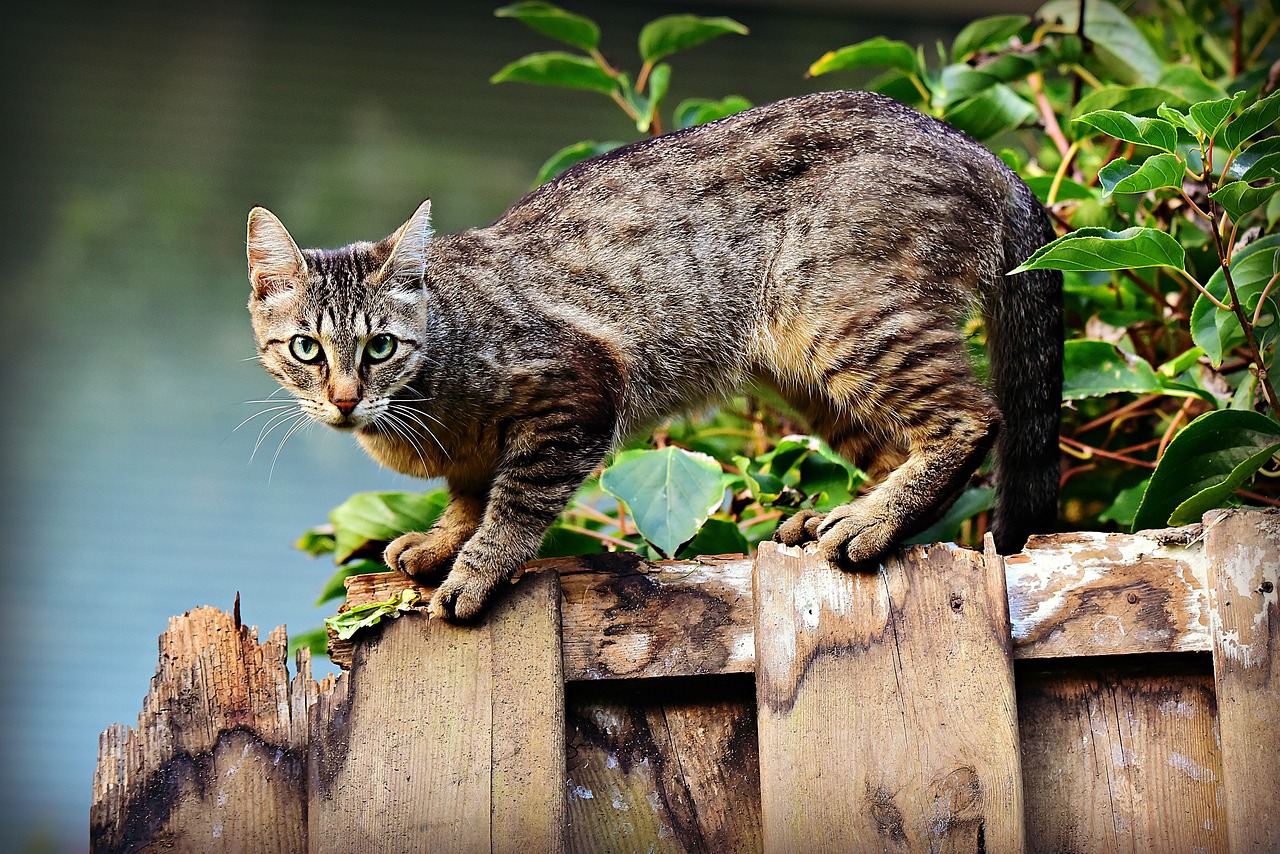
Signs Your Senior Cat Needs Professional Help
As our beloved feline companions age, their grooming needs can change significantly. While regular grooming at home is essential, there are times when your senior cat may require professional help. Recognizing these signs can ensure your furry friend remains comfortable and healthy. So, how do you know when it’s time to call in the professionals?
One of the most apparent indicators is difficulty in grooming. If you notice that your senior cat is struggling to groom themselves, it could be due to arthritis or other age-related issues. Cats are naturally meticulous groomers, and if they are unable to keep up with their usual routine, it may lead to matting or skin issues. If you see your cat leaving patches of un-groomed fur or developing mats, it’s a clear sign that they might need a professional touch.
Another sign to watch for is excessive shedding. While some shedding is normal, if your senior cat seems to be losing more fur than usual and you find clumps of fur around your home, it might be time to consult a groomer. Excessive shedding can sometimes indicate underlying health problems, such as allergies or skin conditions, that require professional assessment.
Additionally, pay close attention to your cat's behavior during grooming. If your once-cooperative kitty suddenly becomes agitated or aggressive when you try to groom them, it could signal discomfort or pain. Senior cats can be sensitive to touch, and if they resist grooming or show signs of distress, it may be best to seek the assistance of a professional who is experienced in handling senior pets. They can approach grooming in a way that minimizes stress and discomfort.
Another important factor to consider is your cat's nail health. Cats, especially older ones, can develop issues with their nails, such as overgrowth or splitting. If you find it challenging to trim your cat's nails or if they seem to be in pain when walking, a professional groomer or veterinarian can provide the necessary care to keep their nails healthy and trimmed.
Lastly, if your senior cat has developed any skin irritations or infections, it’s crucial to consult a professional. Signs of skin issues can include redness, swelling, or unusual odors. These symptoms could indicate infections or other health concerns that require veterinary attention. A groomer can also help identify these problems during a grooming session and recommend further action.
In summary, being attentive to your senior cat's grooming habits and health can make all the difference. If you notice any signs of difficulty grooming, excessive shedding, behavioral changes, nail issues, or skin irritations, don’t hesitate to reach out for professional help. Your furry friend deserves the best care, and sometimes that means bringing in the experts!
- How often should I groom my senior cat?
It depends on the breed and coat type, but generally, senior cats may need grooming at least once a week to maintain their coat and prevent matting. - Can I use human grooming tools on my cat?
No, it's best to use tools specifically designed for cats as they are gentler on their skin and coat. - What if my cat hates being groomed?
Consider using treats and positive reinforcement to make grooming a more pleasant experience. If problems persist, professional help may be necessary. - How can I tell if my cat is in pain during grooming?
Signs of pain can include vocalizing, swatting, or trying to escape. If you notice these behaviors, stop grooming and consult a vet.
Frequently Asked Questions
- What are the unique grooming needs of senior cats?
Senior cats often experience changes in their skin and coat, which can lead to matting and excessive shedding. They may also have mobility issues that make it harder for them to groom themselves. Understanding these needs is crucial for adapting your grooming routine to keep them comfortable and healthy.
- What grooming tools are essential for senior cats?
Using the right tools is key! Essential grooming tools for senior cats include soft brushes, de-shedding tools, clippers, and scissors. Each tool serves a specific purpose, from removing loose fur to trimming nails, ensuring a comprehensive grooming experience.
- How can I create a comfortable grooming environment for my cat?
Creating a calm space is vital! Choose a quiet area in your home, free from distractions, and consider using soft blankets or cushions to make it cozy. Keeping the environment soothing helps your senior cat feel more relaxed during grooming sessions.
- What bathing techniques are best for senior cats?
Bathing can be stressful, especially for older cats. Use warm water and gentle cat shampoo, and consider sponge bathing if your cat is particularly anxious. Always ensure that the experience is as relaxing as possible, and have treats on hand to reward good behavior!
- How do I know if my senior cat needs professional grooming help?
If you notice excessive matting, difficulty in grooming, or signs of discomfort during grooming, it might be time to seek professional help. Additionally, if your cat has health issues that complicate grooming, a groomer or veterinarian can provide the necessary assistance.
- Can I use positive reinforcement during grooming?
Absolutely! Positive reinforcement is a fantastic way to make grooming a more enjoyable experience for your cat. Use treats, gentle praise, and petting to reward your cat during and after grooming sessions, helping to build trust and reduce anxiety.

